All you ever wanted to know about Hi-Fi but didn't know how to ask.
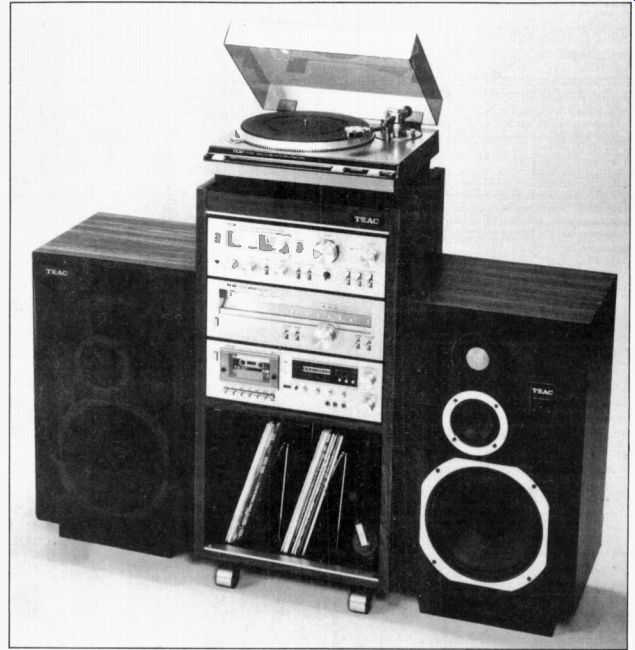
A BUYER'S FIRST foray into a hi-fi shop, laden with cash or plastic card, can be a daunting experience. The lamps are brightly highlighting the chrome-fronted bank-breakers and a pack o salesmen is closing in across the carpet, dorsal fins swishing lightly through the deep-pile ...
Fear is the immediate reaction. Either the guy turns tail and runs for the Dub next door, or he goes under and gets his bank balance bad y damaged. If, in the process, he has obtained a system he can be happy with - fine. If not, then all too soon it will be back to the high street and off the deep-end once more.
One of the most common complaints from first-time buyers is that salesmen (and magazines) use too many technical terms, too many times per second. This leads into the 'numbers-game' where anything from 20 W to 100 W can be made to sound earth-moving and desirable.
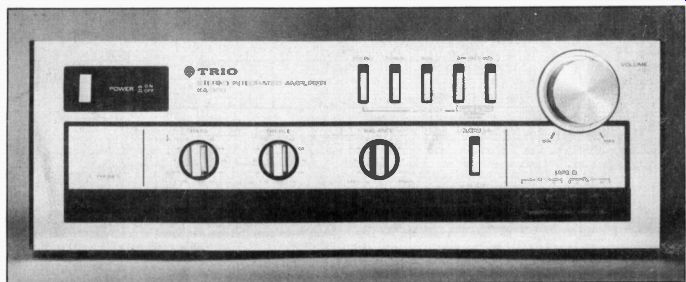
Figure 1. Low budget amplifiers, such as this KA-300, are often bare of
all but the essential features. There are few extras, so choose the
ones you need carefully. For example, "loudness" controls add
nothing to the sound -- except excessive bass.
The purpose of these articles is to remove some of the confusion that surrounds specifications quoted both in the salesroom and in printed matter, be it advertising blurb or whatever. An important part of this will be to point out which specifications are actually relevant and which are sheer bluff. In every case we will try to give some idea of the numbers which matter and how to interpret them.
The Way In
The general text of this feature is designed to offer a logical method for selecting and setting-up a hi-fi system, starting from nothing more than a wish to hear music in the home, and finishing up with how to install the system once you have it.
In addition, special sections will deal with disc players, amplifiers, tuners, tape machines and loudspeakers; discussing briefly the method of operation, the parameters which dictate performance levels - pointing out those which don't -- and explaining the interpretation of these specifications in terms of sound quality. At the end of each section some suggested starting points will be given for various budget levels, beginning at £400 (1982) which is probably the lowest feasible total these days for serious sound pursuit.
These recommendations should be taken simply as that - somewhere to start. No one but you can decide which hi-fi is suitable for your home and only after you've been and listened to the alternatives should you decide to part with your hard earned cash.
Listen to everything you buy before paying for it and be sure it is what you want. Always have the demonstration (as far as possible) set up with as much of your intended final system as can reasonably be arranged. And don't be put off by claims that " . . . it's too difficult". Parting company with £400 + is a serious matter, so make sure the sales staff take your request seriously, too.
Take It On Spec?
Hopefully once you've read this feature you will be confident enough to tackle the task of sorting out the valid claim from the exaggeration, or the double-talk from the helpful advice, but if you're not - ask! It is better to wade through excessive verbiage than to remain shrouded in doubt. Don't be afraid to question what you've been told and mistrust anything which can't be explained to your satisfaction. This is probably bluff! So, once armed with an understanding of the jargon and healthy skepticism, where do we start?
Room For Improvement
First things first. Do you know the size of the room in which the hi-fl will be operated? If you don't, out with the tape measure and find out! This will give you the volume of the air which must be moved to generate your music. In turn, this will tell you the minimum amplifier power output which is necessary for your room. We'll come back to this in a moment or two.
Secondly, decide your budget figure; how much you'd like to spend, and how much you will go up to if pushed. Having set this maximum, stick to it at all costs! It is far too easy to be swayed in the shop with 200 W of Pink Floyd in your ears, stars in your eyes . . . and the salesman's pen in your hand. Feasting on bread and water for a month is not worth the extra 20 W per channel! For the reason that it makes least audible difference to the final sound, I always suggest that a system buyer chooses an amplifier first. The technology of the modern amp is an order of magnitude closer to perfection than either the turntable or loudspeakers and thus differences between them, within limits, are less detectable. Hence, deciding on the amp first allows for more flexibility later on when choosing either the turntable or loudspeakers.
As a basic minimum, 25 W per channel is a safe bet. With the cost of power coming down all the time, there is no point in selecting an amp with less capacity than this, since naught is gained (save frustration) later.
To relate this to your living room, add on 10 W for every 1000 cu. ft. of volume. For example: Room size 10 x 10 x 8 ft. = 800 cu. ft.: Power needed = 25 W Room size 15 x 12 x 8 ft. = 1440 cu. ft.: Power needed = 35 W Room size 25 x 17 x 10ft. = 4250 cu. ft.: Power needed = 65 W For now we'll assume these are nice, clean, honest RMS watts -- the section on amplifiers will deal with power rating more fully, but for the time being we have our guideline and that will suffice.
... But I Know What I Like!
When listening to a piece of hi-fi in a shop or at an exhibition (or anywhere else come to that), remember that the specs and jargon don't matter a jot. If you like the sound and it fits your requirements for price, etc, then that is all that matters. Ignore the salesmen, the nice new model for £30 more, the advice from a friend, neighbor or budgie and buy it! After all, it is you who has to live with it, not the Joneses or the salesmen. Don't be swayed - following the audio fashion is an expensive diversion! Finally, always try to arrange for the dealer to demonstrate three or four different units to you, using the same cartridge, the same music and the same loudspeakers. If he can't (or won't) do this, then remember that once any other part of the chain is altered you cannot be certain that the differences in sound you hear are due to the amplifier.
Budget Balance
At this point we have a set budget figure and a required power for the amplifier. From this it is possible to draw up a shortlist of amps which possess the facilities you need - how many tape inputs, for example? Do you really want LED power meters or flashing lights to tell you what the hi-fl is doing? Remember, these extras all add to the basic cost without helping the sound, so be sensible and keep things a simple as possible.
Make a preliminary trip down to the hi-fi dealer and choose the unit from your shortlist of possible, but try to spend no more than 35 percent of your total budget on the amp (you'll need the rest!). Choosing the amp first is not only logical, it is also the easiest starting point. For reasons which I hope will become clear, we'll take the record player next month. In the meantime, let's have a closer look at the amplifier -- what it should do and why.
The Amplifier Considered
The basic task for an amplifier is to make use of the small signals provided by the record player, tape machine, or tuner, to control the larger voltage available from the power supply and to apply this to the loudspeaker. This is done in such a way that what the speaker 'sees' is an enlarged version of the original signal; it is then up to the speaker to reproduce this enlarged signal (hopefully) accurately.
The power amplifier can thus be considered as a sort of valve, controlled by a preamplifier. The task of a preamp is to bring all the inputs to a common level and to provide some control over them -- usually in the form of volume, tone controls etc -- before passing the now modified inputs to the power amp.
In doing all this the amplifier as a whole should, itself ,change the original signal as little as possible lie distortion must be low). It must respond equally to all frequencies presented to it -- have a flat frequency response -- and have sufficient power available to deliver realistic levels in the living room.
Pay particular attention to the following specs when considering amplifiers, as they alone dictate the basic performance of the unit.
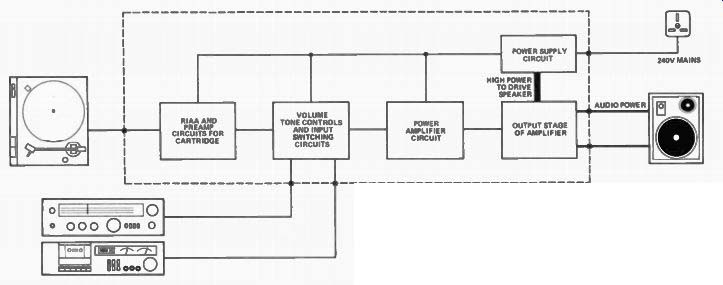
Figure 2. Block diagram of a typical amplifier. The power supply (PSU)
feeds low voltage (about 15 V), low current power to the preamp and the
control circuitry. It also feeds high voltage (around 60 V) to the output
stages and power amp blocks. The record-deck signals need more processing,
as records are not produced with a flat frequency response but are treble-boosted.
When this is cut back again, by the amplifier, the noise produced by the
record manufacturing process is also reduced. This is known as RIAA equalization.
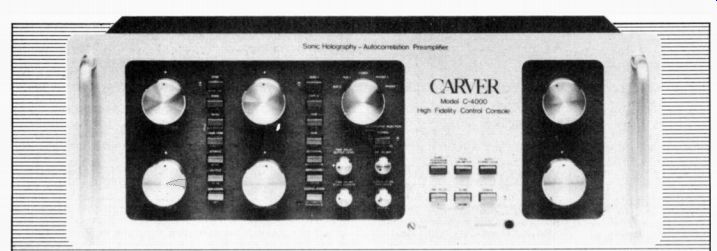
Figure 3. At the top-end of the hi-fi tree, things are often less than
simple! Compare the panel of this Carver preamp with that of the
Trio KA-300 on the previous page. The S-4000 contains a circuit called
a "Sonic
Hologram Generator" which creates a 3-D sound effect, claimed to be
more like listening in a concert hall, than listening to an amplifier.
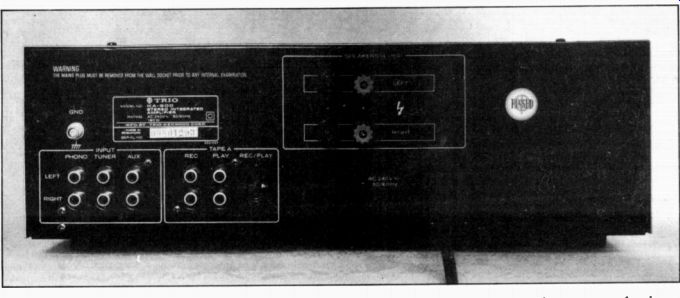
Figure 4. These phono sockets are fairly universal nowadays and you can
buy ready-made leads to connect up almost any type of equipment.
But, as they are identical, be careful when 'plugging in', and NEVER do so when the power is on.
Power Output: There are many ways of specifying it, but few are more relevant than the old reliable RMS method. This is the power the amp can deliver continuously into a speaker, usually quoted for an eight-ohm unit - that is, most loudspeakers on the market. 'Burst' power, or peak delivery, shows you how much the power supply has in reserve to cope with crescendos in the music, or an enthusiastic drummer hitting the bass drum too hard. A peak of this sort will re quire anything up to 100 times the average level of power if it is to be reproduced without distortion. Look for an RMS rating at least as high as that dictated by your room size, with a peak or 'burst' power at least 1.5 times larger. Mistrust DIN, Music Power or any other weird specification of power.
Always take in conjunction with ... Power Bandwidth: Put simply, this is the range of frequency across which an amp is capable of delivering at least half it's quoted output. Normally it is given as two frequencies, ie 3 Hz - 40 kHz; This means that a 50 W unit would deliver 25 W at three cycles per second and at least that much all the way to forty thousand cycles. As the range of audible sound is approximately 20 Hz - 20 kHz, this particular unit is well specified. Beware of catches, though. Consider this:
Amp. A Output: 50 W RMS (at 1 kHz)
Bandwidth: 40 Hz - 20 kHz Amp. B 40 W RMS from 10 Hz - 20 kHz At first glance Amp A is more powerful, but consideration of the bandwidth shows that, at low frequencies, it runs out of power pretty quickly. At 40 Hz it is delivering only 25 W, while Amp B is still capable of 40 W - and thus better bass! The larger spec is not necessarily the most honest. Look for a bandwidth of at least 20 Hz - 20 kHz and mistrust figures of more than 50 kHz as they are not only unnecessary, they are probably detrimental.
Frequency Response: A measure of how evenly, or other wise, an amp will respond to different frequencies. The nearer the graph is to a straight line the better. If a number is quoted, it will be of the form "10 Hz - 20 kHz ± 3 dB"
The 'dB' figure shows the amount of deviation from the straight line; plus or minus 1 dB is excellent, 2 dB mediocre and anything more is unacceptable! Look for 20 Hz - 20 kHz ± 1 dB as an ideal. Discount any figure that doesn't give a dB limit -- it's meaningless.
Signal-To-Noise Ratio: You'll find this in several places throughout the specification. What it tells you is how much hiss or hum or other unwanted noise that particular circuit will add to the signal. All circuits add some, but what constitutes a good figure depends on which part of the amp is under scrutiny.
Look for ... Disc Input: 65 dB or more Tuner/Tape/Aux: 80 dB or more Power Amp: 80 dB or more Accept less if you dare, because if you play your music loud, lower figures will prove obtrusive. A figure quoted as 'weighted' means that it has been 'adjusted' to account for the noise frequencies which are most annoying. This method gives larger numbers, so check carefully. It is, however, a valid adjustment so don't necessarily mistrust it -- but do be aware of it.
THD, IM and TIM: These are all forms of distortion and they tell you what percentage of the output signal is being generated by the amplifier itself. THD stands for Total Harmonic Distortion, IM for International Distortion, and TIM for Transient Intermodulation Distortion. With modern techniques, distortion figures are becoming irrelevant, as all amps these days should produce figures of less than one-hundredth of a percent. So long as the quoted figure is less than 0.1 percent, it can be regarded as sufficient and of no further value for judging how an amp will sound.
Damping Factor:
The ratio of the output impedance of the amplifier against impedance of the speaker; irrelevant as long as it is more than 40. Mistrust anything less and if frequency of measurement is quoted, the lower it is the better.
Practically, it is a measure of how well the amplifier can control the loudspeakers. A basic spec but, again, one which is easy for the manufacturers to get right.
Input Sensitivity: Sensitivity is the amount of signal required, at the input, to produce full power at the output. In other words, if a disc input has a sensitivity of 2 mV an the amp is rated at 80 W then with 2 mV coming in and the volume full up, 80 W of power is delivered into the speaker cable.
Record players will produce, on average, around 5 mV to 50 mV if they are standard moving-magnet types and anything from 0.5 mV down to 0.1 mV for low output moving-coil designs. Quite often an overload figure is also quoted and, if it is, it should be 100 mV or more, as this is the input level at which audible deterioration sets in and the higher this is the better! A competent design will realize a figure of 120 mV with little trouble. Look for figures somewhere near . . . Disc: 2 mV - 3 mV Tuner/Tape/Aux:
100 mV - 200 mV Anything too far away will prove unsatisfactory; either you won't have enough volume or you'll have far too much, and have virtually no level control at all.
Crosstalk:
A measure of how much one channel affects the other, within the amplifier. Power supplies are the major cause of problems and any amp with separate supplies for each channel has an edge on the opposition. In any case, a well designed amp should easily exceed 60 dB.
Slew-Rate and Rise-Time: This is a measure of how fast the amplifier can charge its output level in following a signal.
Measured in volts per microsecond (V/uS) and mathematically similar to Rise Time, the time taken for the output voltage to go from 10% to 90% of its final value.
Both these measurements are becoming more fashionable lately, but their importance is questionable at best. They are related to frequency response, and the faster the Rise-Time, the wider the response. If a figure is given, the higher the better; 60 V/us is, for example, very good.
Class A, B, AB, etc: Or Sigma-Drive or Super-Feedforward or Clean Drive or Super-A or whatever. Ignore the lot! They all describe the circuit technique used in making the amplifier and are all totally irrelevant. If the other figures are right and the amp sounds good, then regardless of what class it is or whether it current-dumps or feeds forward, its a good amp! Methods of operation are interesting reading but, where a first-time buyer is concerned, not relevant to his choice.
NEXT MONTH: We continue with our ascent, choosing a turntable for the system and taking an in-depth look at the specifications.
-----------------
(adapted from: Hobby Electronics magazine)
Also see:
SCALING the Hi-Fi HEIGHTS Part 4
FAMOUS NAMES -- Vladimir Zworykin